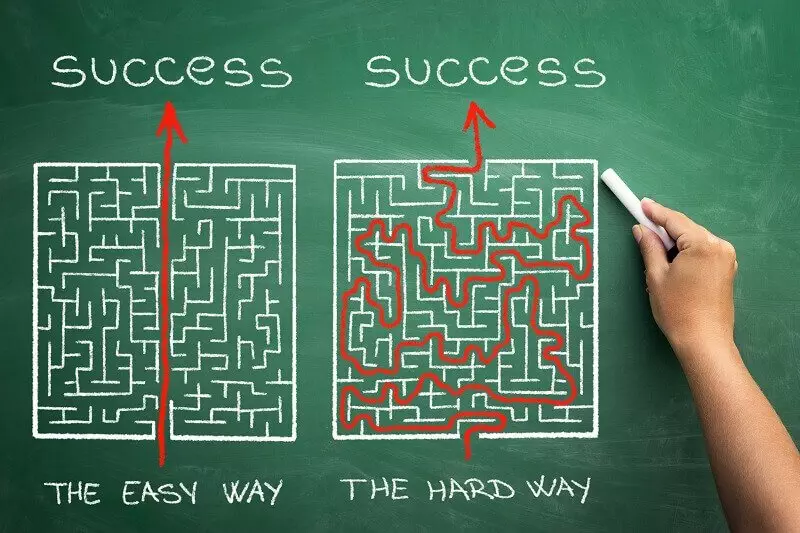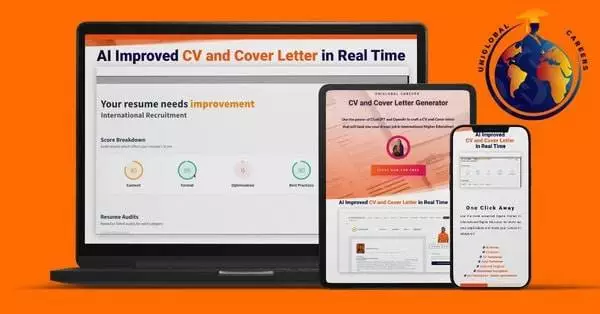The process of international education can be complex and time-consuming. From administrative tasks to language barriers, there are numerous challenges that educators and students face when navigating the global education landscape. However, with the advent of Artificial Intelligence (AI), many of these obstacles can be overcome, streamlining international education processes and making them more efficient and accessible.
Understanding the Challenges in International Education Processes
When it comes to international education, there are several hurdles that need to be addressed in order to ensure smooth processes. One of the main challenges is administrative tasks. From managing applications and admissions to handling student records and documentation, there are various tasks that require significant time and effort from educators and administrators.
Administrative tasks in international education encompass a wide range of responsibilities. Educators and administrators need to meticulously review and process applications from prospective international students. This involves verifying the authenticity of academic credentials, evaluating language proficiency test scores, and assessing financial documentation to ensure that students meet the necessary requirements for admission.
Once students are admitted, the administrative workload continues. Educators and administrators must handle the enrollment process, ensuring that students are registered for the appropriate courses and have access to necessary resources. They also need to maintain accurate records of students’ academic progress and attendance, which involves meticulous data entry and organization.
In addition to administrative tasks, language and cultural barriers pose another significant challenge in international education. Communicating and understanding diverse languages can be a barrier to effective teaching and learning. Educators need to find innovative ways to bridge this gap and ensure that language barriers do not hinder students’ educational experiences.
Language support programs, such as English as a Second Language (ESL) courses, can help international students improve their language skills and adapt to a new academic environment. These programs provide students with the necessary tools to enhance their communication abilities, enabling them to actively participate in classroom discussions and comprehend complex subject matter.
Moreover, cultural differences can impact students’ integration into a new educational environment, making it crucial to facilitate cultural integration for a successful learning experience. Educational institutions often organize cultural exchange programs, where students from different backgrounds can interact and learn from each other’s experiences. These programs foster an inclusive environment and promote cross-cultural understanding, helping students feel more comfortable and supported in their educational journey.
Furthermore, technological limitations can hinder global education processes. Outdated systems and infrastructure can lead to inefficiencies and a lack of connectivity, making it difficult to access resources and collaborate across borders.
In today’s digital era, it is essential for educational institutions to embrace technology and invest in modern infrastructure. This includes providing students with reliable internet access, equipping classrooms with cutting-edge educational technology, and implementing robust learning management systems. By doing so, institutions can overcome technological barriers and create a seamless and interactive learning environment that transcends geographical boundaries.
Additionally, technology can facilitate global collaborations and virtual exchange programs. Through online platforms, students from different countries can engage in joint projects, share ideas, and learn from each other’s perspectives. This not only enhances their academic experience but also prepares them for the interconnected global workforce.
In conclusion, international education processes are complex and require careful attention to various challenges. From administrative tasks to language and cultural barriers, and technological limitations, educators and administrators must navigate these obstacles to provide a seamless and enriching educational experience for international students.
An Introduction to Artificial Intelligence in Education
Artificial Intelligence, commonly referred to as AI, is the simulation of human intelligence in machines that can perform tasks that typically require human intelligence. In recent years, AI has gained significant traction in the field of education. Its potential to transform teaching and learning experiences has made it a promising tool for educators worldwide.
AI plays a crucial role in modern education by offering personalized learning experiences for students. Through AI-powered algorithms, students can receive individualized feedback and adaptive learning plans based on their unique learning styles and abilities. This tailored approach not only enhances student engagement but also improves learning outcomes.
In addition to personalized learning, AI in education also brings numerous other benefits. One such benefit is the ability to automate administrative tasks, freeing up valuable time for educators. AI-powered systems can handle tasks such as grading assignments, managing student records, and generating reports, allowing teachers to focus more on instruction and student support.
Furthermore, AI can assist educators in identifying students who may be at risk of falling behind. By analyzing data on student performance and behavior patterns, AI algorithms can flag potential issues early on. This early intervention enables teachers to provide targeted support and interventions to help struggling students succeed.
Another exciting application of AI in education is the development of intelligent tutoring systems. These systems use AI algorithms to provide personalized instruction to students, guiding them through the learning process. By adapting to each student’s pace and level of understanding, intelligent tutoring systems can effectively fill knowledge gaps and provide additional support in areas where students may be struggling.
Moreover, AI can facilitate collaborative learning experiences by enabling virtual interactions and simulations. Through AI-powered platforms, students can engage in virtual discussions, work on group projects, and participate in simulated real-world scenarios. These interactive experiences not only foster critical thinking and problem-solving skills but also promote collaboration and teamwork.
As AI continues to advance, its potential in education is boundless. From virtual reality classrooms to intelligent virtual assistants, the possibilities are vast. However, it is important to note that while AI holds great promise, it is not meant to replace teachers. Rather, it is a powerful tool that can enhance teaching and learning, providing educators with valuable insights and resources to support student success.
Streamlining International Education Processes with AI
Artificial Intelligence (AI) is revolutionizing the field of international education by streamlining various aspects of the process. From administrative tasks to language barriers and cultural integration, AI is transforming the way we approach education on a global scale.
One of the key areas where AI can make a significant impact is in automating repetitive and time-consuming administrative processes. With AI-powered systems, tasks such as student applications, admissions, and records management can be handled efficiently. This automation not only reduces manual work but also improves overall efficiency, allowing educators and administrators to focus on more strategic and creative aspects of their roles.

Language barriers have always been a challenge in international education, but AI is changing that. AI-powered translation tools are enabling instant translation of text and speech, breaking down communication barriers between educators and students. This technology not only facilitates effective communication but also promotes cultural exchange and understanding. Additionally, AI-powered language learning applications are providing personalized language learning experiences, making it easier for international students to acquire language skills and integrate into their new academic environments.
Furthermore, AI is contributing to cultural integration in international education. AI-powered platforms are providing students with valuable resources and cultural insights, helping them understand and adapt to new cultural environments. These platforms offer a wealth of information about customs, traditions, and social norms, promoting cultural sensitivity and inclusivity.
Virtual exchange programs, facilitated by AI, are connecting students from different countries and enabling them to engage in cross-cultural learning. Through these programs, students can interact with their peers from around the world, sharing experiences, perspectives, and knowledge. This fosters global citizenship and intercultural understanding, preparing students to thrive in an increasingly interconnected world.
In conclusion, AI is revolutionizing international education by streamlining administrative processes, overcoming language barriers, and promoting cultural integration. With the help of AI-powered systems and tools, educators and students can focus on what truly matters: creating meaningful learning experiences and fostering global understanding.
Case Studies of AI in International Education
AI has already made significant strides in the field of international education. In the realm of international student recruitment, AI-powered chatbots and virtual assistants have been employed to provide personalized guidance and support to prospective students. These tools can answer inquiries, provide information about courses and programs, and assist with the application process, enhancing the overall student recruitment experience.
For example, imagine a student from India who is interested in pursuing a degree in computer science at a university in the United States. With the help of an AI-powered chatbot, the student can easily find information about the admission requirements, tuition fees, and scholarships available. The chatbot can also provide personalized recommendations based on the student’s academic background and interests, suggesting relevant courses and programs that align with their goals. This level of personalized guidance can greatly simplify the application process and ensure that the student makes informed decisions.
Cross-cultural learning platforms have also benefited from AI integration. AI-powered algorithms can analyze students’ learning behaviors and preferences, offering personalized recommendations for learning materials and resources. This not only enhances students’ learning experiences but also promotes cultural exchange and understanding between students from different backgrounds.
For instance, consider a language learning platform that uses AI algorithms to analyze the learning patterns of its users. Based on this analysis, the platform can recommend specific language exercises and activities that are tailored to each individual’s learning style and proficiency level. Furthermore, the platform can also suggest culturally relevant content, such as articles and videos, that expose students to different aspects of the target language’s culture. By providing personalized and culturally diverse learning materials, AI-powered platforms foster an inclusive and immersive learning environment that encourages students to explore and appreciate different cultures.
Moreover, AI can play a crucial role in assessing students’ language proficiency and providing feedback. Language assessment tools powered by AI can evaluate students’ pronunciation, grammar, vocabulary, and fluency, offering detailed feedback and suggestions for improvement. This enables students to track their progress and identify areas where they need to focus more attention, ultimately enhancing their language skills.
In summary, AI has revolutionized international education by offering personalized support to prospective students and enhancing cross-cultural learning experiences. Through AI-powered chatbots and virtual assistants, students can receive tailored guidance and information, making the application process more efficient and transparent. Additionally, AI algorithms facilitate personalized learning experiences by recommending relevant materials and promoting cultural exchange. With the continued advancement of AI technology, the potential for further innovation in international education is vast.
The Future of AI in International Education
The potential for AI in international education is vast, and there are several trends that are likely to shape its future. One of the key trends is the increased use of AI-powered virtual assistants and chatbots. These intelligent systems can provide instant support and guidance to students, improving accessibility and reducing response times.

Imagine a world where students no longer have to wait for hours or even days to get their questions answered. With AI-powered virtual assistants and chatbots, students can receive immediate assistance, 24/7. These virtual assistants are equipped with vast amounts of knowledge and can answer questions on a wide range of topics, from academic subjects to university resources and campus life. They can even provide personalized recommendations based on the student’s interests and goals.
Furthermore, AI-powered virtual assistants can adapt to individual learning styles and preferences. They can analyze a student’s past interactions and tailor their responses accordingly. For example, if a student prefers visual explanations, the virtual assistant can provide diagrams or videos to enhance understanding. This personalized approach to learning support can greatly enhance the student experience and promote independent learning.
Another trend is the development of AI-based assessment tools. These tools can analyze student performance and provide insightful feedback, helping educators identify areas of improvement and tailor their teaching approaches. AI-powered assessments can also contribute to more accurate and reliable evaluation processes, ensuring fair and unbiased evaluations.
Traditionally, assessments have relied on subjective grading by teachers, which can introduce biases and inconsistencies. With AI-based assessment tools, evaluations can be standardized and objective. These tools can analyze not only the final answers but also the steps taken to arrive at those answers. By doing so, they can provide detailed feedback on the student’s problem-solving skills and critical thinking abilities.
Furthermore, AI-powered assessment tools can adapt to the individual needs of students. They can identify patterns in a student’s performance and provide targeted practice exercises to address specific weaknesses. This personalized approach to assessment can help students progress at their own pace and build a strong foundation in the subject matter.
In addition to virtual assistants and assessment tools, AI can also play a significant role in curriculum development. By analyzing vast amounts of data on student performance, AI algorithms can identify gaps in the curriculum and suggest updates or modifications. This data-driven approach to curriculum design can ensure that students are equipped with the knowledge and skills required for the rapidly evolving job market.
Moreover, AI can assist in the creation of adaptive learning platforms. These platforms can dynamically adjust the content and pace of learning based on the student’s progress and individual needs. By providing personalized learning experiences, adaptive learning platforms can maximize student engagement and motivation.
Overall, the future of AI in international education is promising. With AI-powered virtual assistants, assessment tools, and adaptive learning platforms, students can receive personalized support, feedback, and instruction. This technology has the potential to revolutionize the way we learn and teach, making education more accessible, efficient, and effective.
Potential Challenges and Solutions for AI in Global Education
While AI offers numerous benefits in international education, there are also potential challenges that need to be addressed. One challenge is the ethical use of AI in education. Ensuring data privacy and security, as well as fairness and transparency in decision-making processes, are crucial aspects that need to be carefully considered and regulated.
Another challenge is the digital divide. While AI has the potential to revolutionize education, access to technology and reliable internet connectivity is still an issue in many parts of the world. Bridging the digital divide is essential to ensure equal opportunities for all learners, regardless of their geographical location or socioeconomic status.
In conclusion, by leveraging the power of AI, international education processes can be streamlined, making them more efficient and accessible. From automating administrative tasks to overcoming language and cultural barriers, AI offers transformative solutions. However, it is crucial to address potential challenges and ensure that AI is used ethically and inclusively for the benefit of all learners in the global education community.


